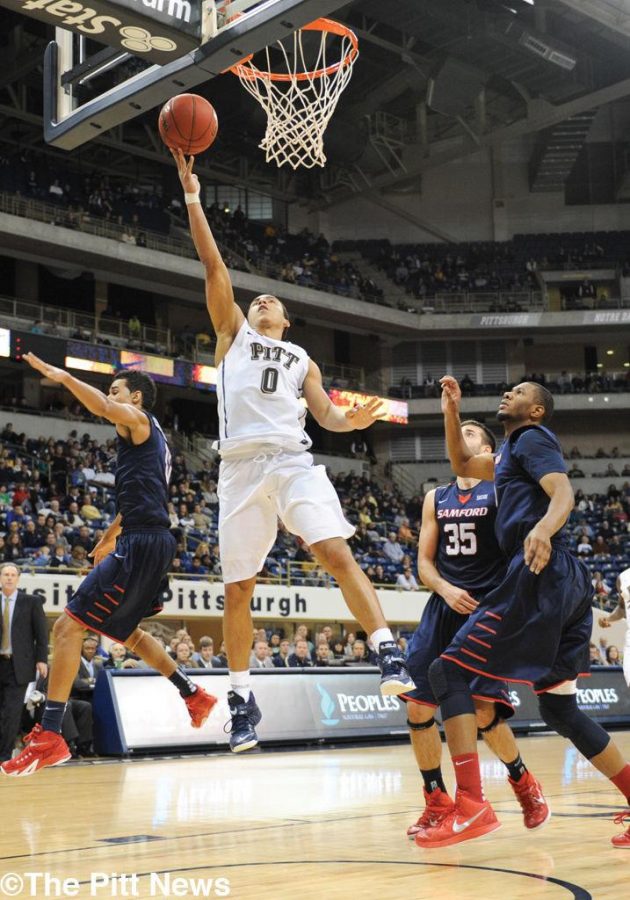Making adjustments: A look back on Pitt’s season so far
January 7, 2015
Just before the start of the college basketball season, I looked at the Panthers’ schedule, took the optimistic approach to a few games and decided that 25-7 would be an achievable mark. Fifteen games, a loss to Hawaii and a homecourt nail-biter against Oakland University later, I would like to amend my original projection. How do I go about doing this?
This season, Pitt’s team just isn’t coming together like most of us had hoped. Injuries and suspensions have played a part, sure, but that’s something we’ve come to expect. There are grander problems to consider — the lack of a true big man being one. ACC play is now underway, meaning Pitt will encounter a handful of the country’s most talented post players: Duke’s Jahlil Okafor, Louisville’s Montrezl Harrell, Syracuse’s Rakeem Christmas and North Carolina’s Kennedy Meeks, to name a few. It’ll be up to Derrick Randall and Michael Young to stop bigger and more talented players without getting into foul trouble, as quality bench depth is a problem.
Being undersized also causes problems on the offensive end of the floor, as San Diego State and North Carolina State — the only teams Pitt has faced, thus far, with talented interior size — blocked 10 and nine Pitt shots, respectively. Both games were decided by significant margins, and Pitt’s post struggled to score.
Another glaring problem with this Pitt team is one that has plagued the program for years: the Panthers lack a true scorer. Basketball analysts talk constantly about the need for a “go-to guy,” someone you’d trust with the ball on the final possession of a tight game. Before the season, we all thought that guy would be Durand Johnson, of whom I’ve never been a big fan. I thought his shot selection was a little too free-spirited, but I’ve now realized that the shots he pulled were necessary. With Johnson suspended, Pitt not only lacks someone who’s capable of making the tough shot, but appears to lack someone willing to take that kind of shot.
Look at it this way: Young’s 13.7 points per game, best on the team, rank 16th in scoring in the ACC. He’s the only Pitt player that ranks in the top 35 in that category. So far this year, Pitt has just four total 20-plus point performances. But individual scoring isn’t the only issue on the offensive end: Pitt’s team offense ranks 13th out of 15 ACC teams. Only Boston College and Clemson score fewer points, and the difference is slim. Evidence of that comes from Pitt’s Tuesday night victory over BC, in which the final score was only 61-60, even though the game went into overtime.
Nobody in the conference grabs fewer defensive rebounds than Pitt, which is unacceptable considering the quality of Pitt’s non-conference schedule. As a team, Pitt averages less than five steals and less than four blocks.
So what does all of this mean?
It means I must have made that 25-7 prediction after one too many Busch Lights, apparently.
Duke, Virginia and Louisville look as good as or better than advertised, and are currently ranked as three of the top five teams in the country.
North Carolina and Syracuse are struggling by the standards of their programs, but are still solid teams. Notre Dame, North Carolina State and Miami are exceeding expectations. The Hurricanes nearly beat No. 3 Virginia not long ago. Despite this appearing to be a down year for Syracuse, the Orange still pose a threat to Pitt.
In other words, the ACC is strong — probably the strongest conference in college basketball.
If things don’t change for Pitt in the near future, missing the NCAA tournament will become a strong possibility, and the Panthers’ second ACC season will quickly become a forgettable one.








